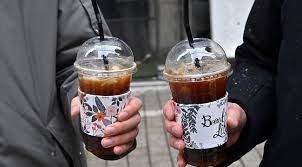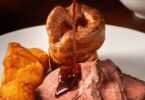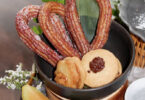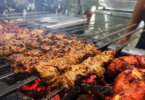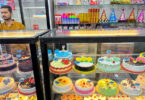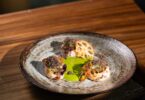Seoul (AFP): K-pop stars BTS drink it. It appears in K-dramas. Fans are so dedicated to consuming it year-round they’ve coined a new South Korean proverb: “Even if I freeze to death, iced Americano!”
The humble coffee — shots of espresso served over ice, topped up with water — has become South Korea’s unofficial national drink, outselling its hot counterpart even during the depths of winter, Starbucks data shows.
Office worker Lee Ju-eun, clad in an ankle-length puffer jacket, shivered on the pavement in downtown Seoul as she clutched her iced coffee during a polar Vortex cold snap in January, when temperatures hit minus 17 degrees Celsius (1.4 degrees Fahrenheit).
“I only drink this. Iced Americano is easier to drink and also tastier, so I enjoy drinking it even in winter,” she told AFP, gingerly holding the edge of her frozen plastic cup.
“I’m cold but it’s okay. I can endure it,” she said.
Accountant Lee Dae-hee told AFP he drank iced Americanos exclusively because it was a faster and more efficient caffeine hit, essential in South Korea’s hard-driving “ppalli-ppalli” — hurry-hurry — work culture.
“I quickly drink iced Americano to wake up and work,” Lee said as he tried to shield his large cup of coffee from the driving snow while rushing back to his office after lunch.
“It doesn’t make me cold because I go straight to the office and I don’t spend much time outside,” he said.
‘Ah-Ah’
South Koreans take their coffee seriously.
The average South Korean drinks 353 cups per year, more than double the global average, according to a 2019 study by the Hyundai Research Institute.
Coffee culture has even spawned its own language.
Iced Americano is known as “Ah-Ah” and its die-hard drinkers are known as “Eoljuka”, a contraction of a new proverb proclaiming they’d freeze to death for their drink.
The trend has been noticed by corporate coffee giant Starbucks Korea, which ran an “ice challenge” promotion where “Eoljuka” got a free size upgrade when they ordered in late January’s sub-zero temperatures.
Iced drinks accounted for 76 percent of total sales at Starbucks stores in South Korea in 2022, the company said. Even during January’s cold snap they sold more iced Americanos — 54 percent — than hot ones.
“People’s tendency of consuming goods, food and beverages regardless of the weather seem to have become a new trend,” Park Han-jo from Starbucks Korea told AFP.
Independent coffee shops said their data showed the same thing. Kim Bum-soo, who owns a cafe in downtown Seoul, said around half his coffee sales were iced Americanos, all year round.
“It does seem that Koreans prefer cold drinks,” Kim told AFP, adding that foreign tourists, especially Chinese, tended to order warm tea even in summer.
Consuming cold water and iced beverages is forbidden in traditional Chinese medicine. However, “Koreans just drink whatever they want, regardless of whether it’s cold or hot outside,” Kim said.
– Cold noodles –
One reason Seoul office workers love iced Americanos could be that their workspaces are too hot and stuffy, cafe owner Kim said.
Self-confessed “Eoljukah” Jeong Jae-won, 30, agreed.
“It’s warm inside the office so I’m going to drink it there,” she said.
It’s not just office workers who love the beverage. K-Pop megastar Suga of BTS is frequently photographed with an iced Americano in hand, despite telling fans he was trying to cut back on caffeine.
Foreign K-pop fans have discussed at length in online forums NCT Dream’s Jaemin’s preferred version of “Ah-Ah”: eight shots of espresso served over ice.
South Korea’s “Ah-Ah” addiction could be linked to its cuisine, said Jang Jun-woo, a food columnist who runs a tapas wine bar.
Food such as the cold noodle dish naengmyun, which is served with ice cubes in the broth, is an integral part of local tradition but rarely seen elsewhere.
“Even in Japan people don’t actually put ice in their cold udon noodles,” Jang told AFP.
“The degree of cold food culture is more extreme in Korea and that may explain the popularity and prevalence of iced coffee here.”

